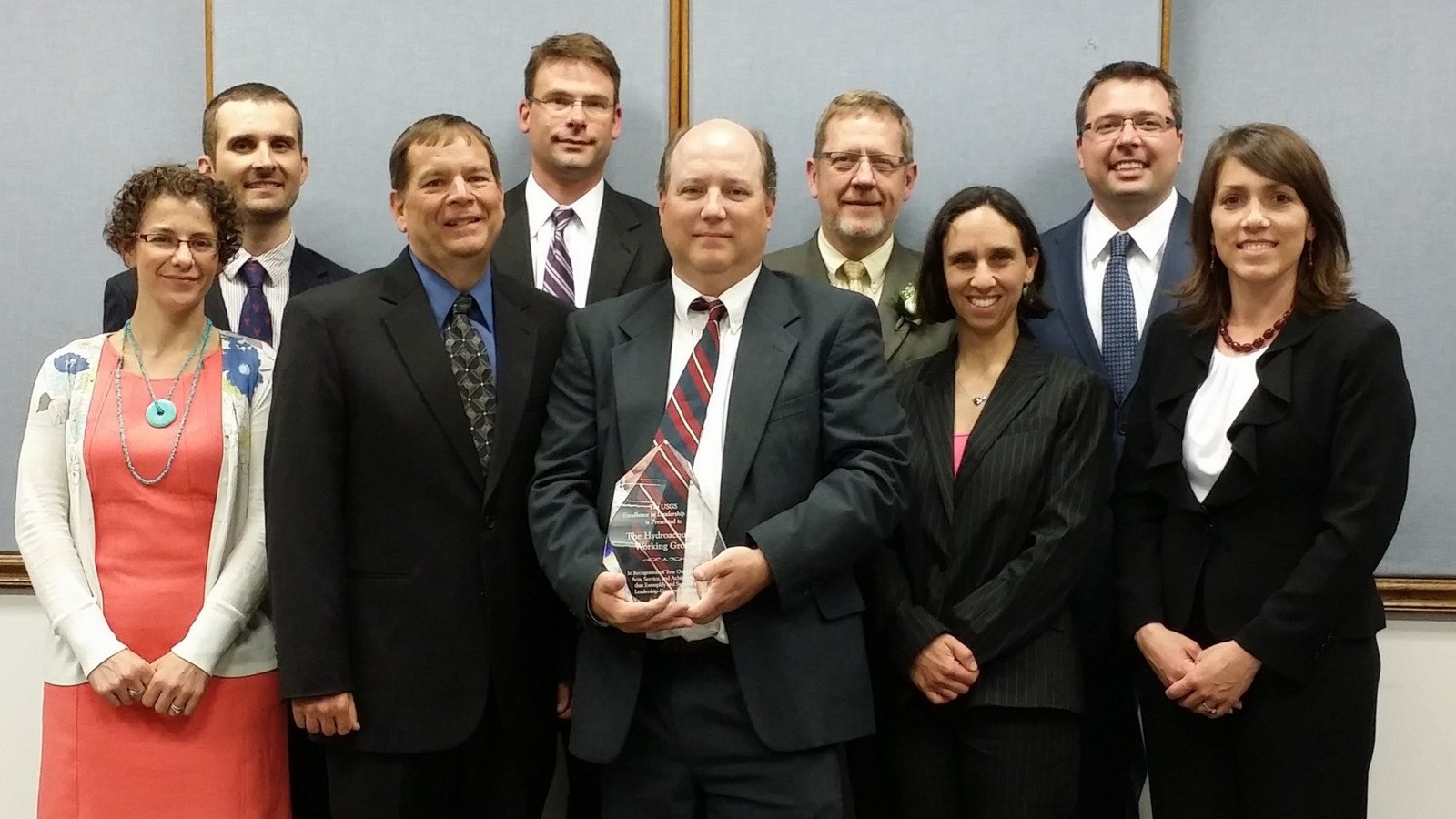Hydroacoustic Work Group Wins Excellence in Leadership Award!
OSW's Hydroacoustics Work Group won the USGS Excellence in Leadership Award. The award is given in recognition of outstanding acts, services, and achievements that exemplify and support the USGS leadership goals throughout the Bureau.


HaWG Members Receiving the Award
| Permanent/Adhoc Members | Organizational Unit | Rotational Members | Organizational Unit |
|---|---|---|---|
| Kevin Oberg | Office of Surface Water | Sonny Anderson | Florida WSC |
| David Mueller | Office of Surface Water | Jeff East | Texas WSC |
| Mike Rehmel | Office of Surface Water/IN WSC | Jason McVay | Iowa WSC |
| Brandy Armstrong | Coastal and Marine Geology | Nick Stasulis | New England WSC |
| Elizabeth Hittle | Pennsylvania WSC | Molly Wood | Idaho WSC |
| Kirk Thibodeaux | Hydrologic Instrumentation Facility |
Award Citation
The Excellence in Leadership Award citation, prepared by Robert Mason, Acting Chief, Office of Surface Water, reads as follows:For the USGS Office of Surface Water, the ability to measure stream flow day in, day out in multiple locations, many remote, has been the bread and butter of water science. Acting Director Suzette Kimball, in her August 19th Monday Message pointed out: "The very first thing Chairman Simpson mentioned was our streamgage network and how important streamgages are to his colleagues." The past 20 years has seen a revolution in the technology available to make such measurements. The USGS has been the leader in setting standards for making these measurements. Google "Price AA current meter," the mechanical current meter that was the workhorse of measurements in the last century, and you get "USGS TYPE AA MODEL 6200". With the turn of the 21st century came acoustic Doppler technology, a sort of radar for the ocean, which would transform how stream flow measurements are made. This transformation is due to the leadership and technical skill of Kevin Oberg and Dave Mueller and the Hydroacoustics Working Group (HaWG). When acoustics came on the scene, the USGS was faced with a great opportunity, but also a huge problem. Acoustic methods could be very efficient in the field, promising to get a much better picture of the cross section stream flow, allow better response to floods, just to start. But to change decades-old, established methodologies that were the basis of long standing ratings and techniques, to do this in an organized way across districts in 50 states with very different needs, and to iron out technical issues with manufacturers, was a huge challenge. Oberg, Mueller, and the HaWG's influence in this change are a perfect example of USGS leadership principles. Oberg, Mueller and the HaWG worked with everyone to establish the reliability of the new acoustic techniques so that the use of acoustics became standard practice, and they did so with great speed. Collaborations were formed with academia, USGS districts, other countries' water agencies and equipment vendors to accomplish the extensive and time consuming testing that would demonstrate the feasibility of acoustic techniques; hundreds of technicians were trained in the new methods and encouraged to submit data. Through the USGS' review process, constant vigilance about the resulting quality of USGS data was, and still is, maintained during this technological transition. In 1995, 1% of stream flow measurements were made by acoustic methods. In 2010 it was 75%. This was not due the USGS Office of Surface Water requiring districts to adopt new measurement techniques, but rather because the HaWG persuaded people it was a good idea to try, one person at a time and one district at a time. This influence on the course of USGS' acoustic stream flow measurements, and indeed in stream flow measurements world-wide, continues to this day. Many past USGS Excellence in Leadership Awards have been given to people already in very clear leadership positions, to Center Directors, District Chiefs and similar. Oberg, Mueller and the HaWG's influence has been unique and effective as it has occurred behind the scenes, at much lower level. Modeled on the HaWG, a new effort has sprung up to do the same for sediment methods. Unless you are directly involved in water resources field measurements or read the WRD Instrument News, you probably would not have heard of them. I hope you will agree that this kind of long term influence in such a fundamental part of the USGS is an example of Excellence in Leadership."
